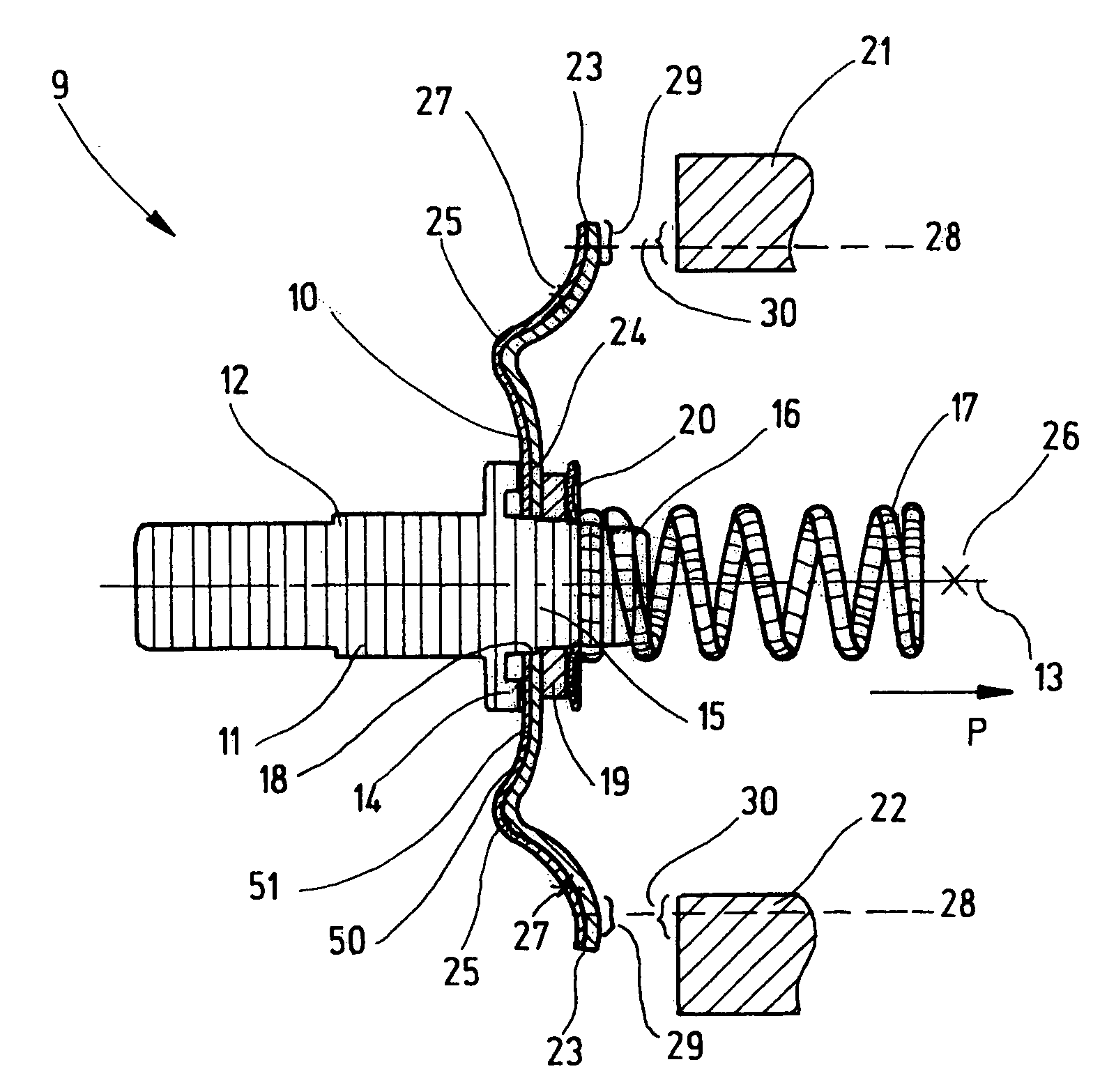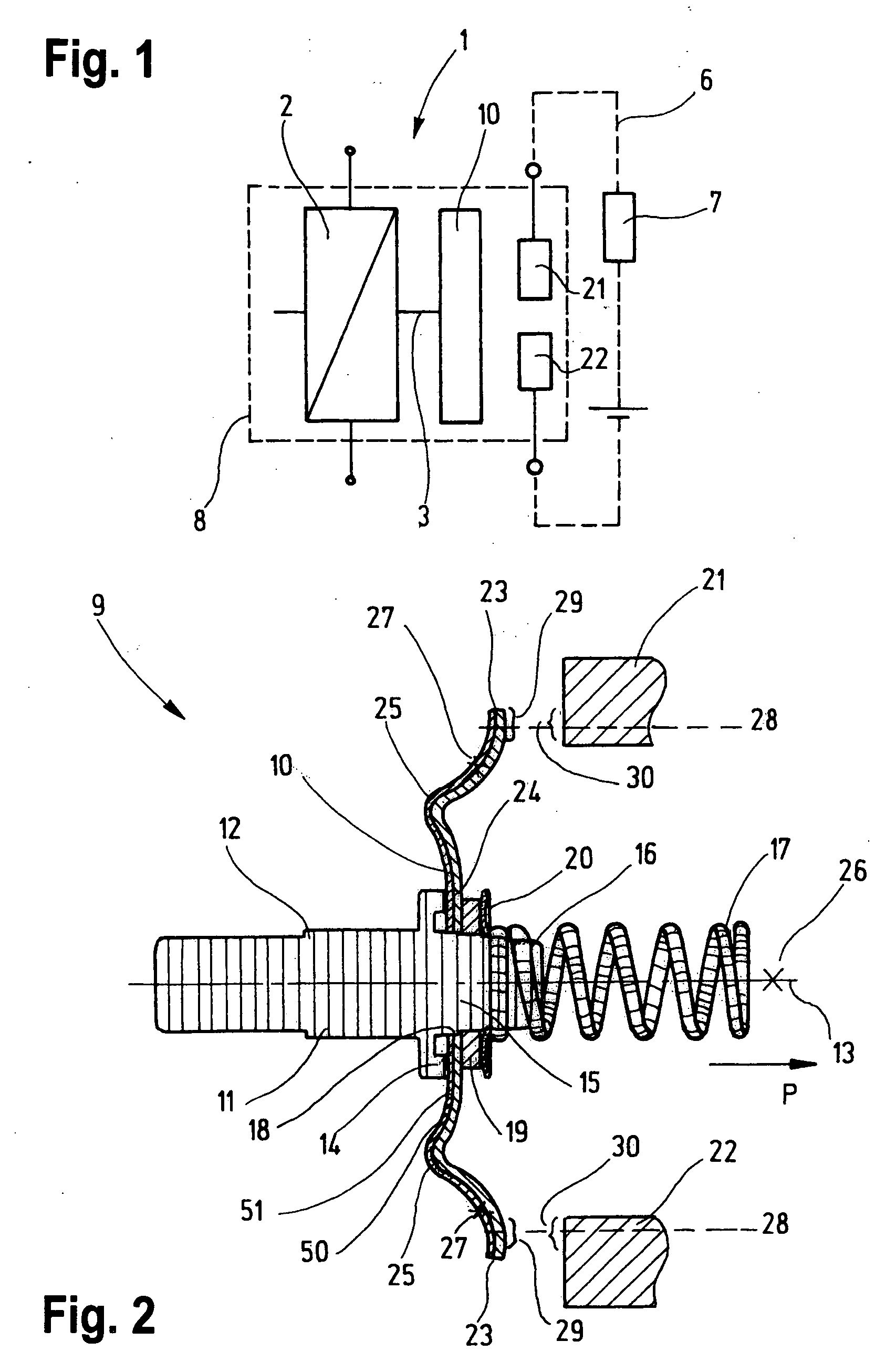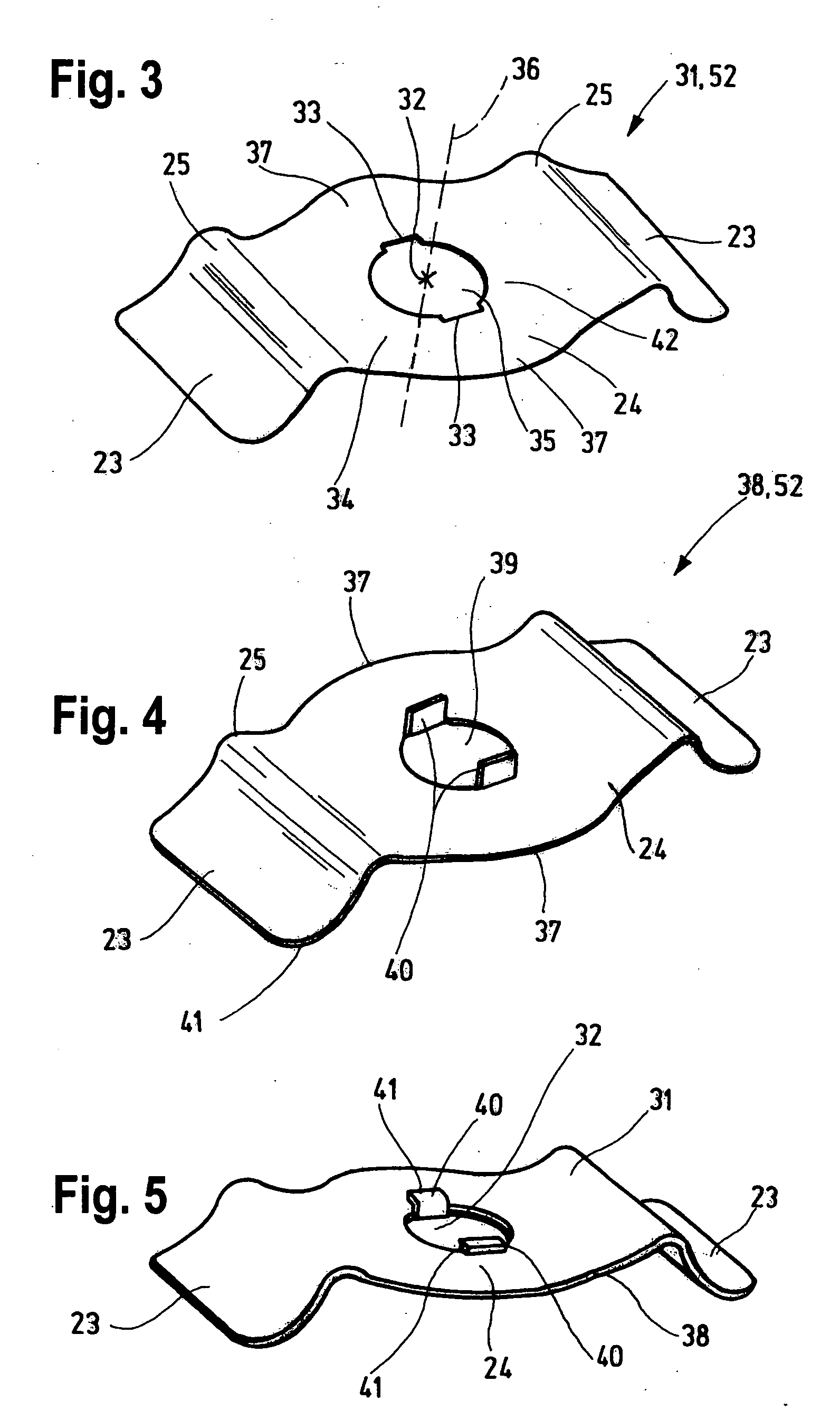[0004] By comparison, the invention offers the
advantage that the contact bridge is embodied as self-resilient and has a curved embodiment, which under the
contact pressure that occurs in the switching actuation allows a reversible change in shape of the contact bridge, and in particular a (for instance slight) widening of the curved shape. Widening of the curved shape is intended to mean that the curved contour—as viewed in longitudinal section—flattens out; the end pieces of the curve accordingly have a greater spacing from one another in the deformed state. The change in shape is caused by the fact that the end pieces of the curve meet the contact faces of the counterpart contacts, causing a vector shift in the compression force that exerts the
contact pressure, such that a
transverse force component occurs. The result is sliding or chafing of the ends of the curve on the contact faces of the counterpart contacts; the chafing motion of the two ends of the curve extends outward and diametrically opposite, when the curved contour flattens as described above. Upon closure of the contacts, the contact faces of the contact bridge accordingly become seated on the face of the counterpart contacts, and (in the ensuing pressing of the contact bridge) are pressed slightly outward in a gentle course of motion. Because of the self-resilience of the contact bridge, which is due to the curved contour and to the properties of the material, and over the course of the actual first contact closure, the above-described, outward-oriented chafing of the contact faces on one another occurs. This is associated with cleaning of the contact faces on the contact bridge and on the associated counterpart contacts which occurs simultaneously with the contact closure and which persists over the entire service life of the relay. The chafing contact touch in the course of the seating on the contact faces removes surface substrates that are present, especially oxides and / or sulfates, by mechanical action. Moreover, because of the self-resilient embodiment and the “overpressing” of the contact bridge that lasts beyond the instant of the first actual contact closure, a burnoff reserve is formed. Even severely worn (burned-off) contacts, because of the chafing seating process, make reliable contact over a large area. This extensively assures clean, reliable contact closure.
[0006] In a further preferred embodiment, the contact compression spring and contact plate are adapted to one another in shape. This means that the
structural shapes of the two components are adapted to one another in such a way that the most favorable possible structural dimensions, the most economical possible manufacture, and the best possible fit accuracy are obtained.
[0007] In an especially preferred embodiment, it is provided that the contact compression spring is embodied as a spring plate. The term spring plate is understood to mean a spring which develops its spring properties substantially transversely to its two-dimensional extent. Using it makes the structural size of the relay smaller.
[0013] In a preferred embodiment, a rotary alignment and / or fixation device is provided, which defines the contact compression spring, the contact plate, or both in their relative position with respect to the contact bridge holder. To that end, the opening described above, for instance, which is not circular but oval or embodied in some other geometrically suitable way in the contact plate and the contact spring, not only forms a material extension acting as a current-
carrying capacity amplification zone and as a rotary alignment and / or fixation device of the contact place and the contact compression spring relative to one another, but moreover makes it possible to insert the contact bridge holder through the contact bridge, so that precisely because of the rotary alignment and / or fixation device, the contact bridge is seated in a precisely defined position on the contact bridge holder. The cross-sectional geometry of the contact bridge holder in the seating plane of the contact bridge and the geometry of the opening in the contact bridge correspond to one another.
[0014] It is also preferably provided that the contact bridge, seated in this way on the contact bridge holder, be retained on the contact bridge holder by means of a clamping disk. The clamping disk is understood to be a component which is slipped, by means of an opening located in it, onto the end of the contact bridge holder that holds the contact bridge;
peripheral regions of the opening that are embodied in the form of tabs or teeth, for instance, bend outward in the direction of the
insertion motion of the contact bridge holder and in the process notch into
tree material comprising the contact bridge holder. The result is a blocking action in the direction extending opposite the
insertion motion. The contact bridge is consequently fixed on the inserted end of the contact bridge holder. It is thus assured that the contact bridge has a precisely defined location inside the relay arrangement, so that loosening or slippage or longitudinal and / or axial play relative to the axis of the switching motion can as much as possible be precluded. It can thus be prevented that the outer contour of the contact bridge will scrape or scratch the relay housing or switch cap, for instance, causing abrasion of housing material, which could spoil the contact faces and worsen the contact- making process. This also assures that the switching event will be executed without hindrance from external mechanical braking or blocking factors caused by the scraping of the contact bridges on the relay housing or switch cap.
[0015] In an especially preferred embodiment, it is provided that the contact bridge, to embody its curved shape—viewed in longitudinal section—be embodied approximately in a U shape, and that the free ends of the legs of the U be made to extend curving outward. Such an embodiment makes it possible for the ends of the legs to have a shaping which promotes the above-described sliding-on motion onto the contact faces of the counterpart contacts and that necessarily predetermines the direction of the sliding motion.
 Login to View More
Login to View More  Login to View More
Login to View More 


